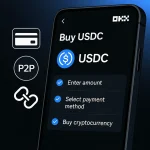If you’ve ever wondered why some crypto assets thrive while others fade, the answer is often tokenomics. Understanding tokenomics means understanding the economic engine that powers a token’s value, user adoption, and long-term sustainability. In this practical guide, you’ll learn how to evaluate supply schedules, demand drivers, distribution choices, governance, and incentives—so you can make smarter decisions in crypto.
Quick win: If you’re just getting started and want lower trading fees, you can sign up for an exchange account with fee discounts. See the section below on how to get 20% off fees and up to $10,000 in benefits on Binance.
What tokenomics really is
Tokenomics is the design of a crypto asset’s economic system. It blends monetary policy (supply, emissions, burns), incentive engineering (rewards, fees, staking), and governance (who decides what) with distribution (who gets how much and when) and market structure (liquidity, float, FDV). Strong tokenomics produce durable demand and responsible supply; weak tokenomics produce short-lived pumps and painful drawdowns.
Core pillars of tokenomics:
– Supply mechanics: issuance, emissions, hard caps, burns, buybacks
– Demand mechanics: utility, fees, staking, collateral use, governance power, access rights
– Distribution and unlocks: team/investor allocations, public sales, fair launch, airdrops, vesting
– Governance and treasury: decision-making, protocol control, fee switches, treasury health
– Market structure: free float, liquidity depth, market cap vs FDV, exchange quality
Supply mechanics you must understand
1) Issuance and caps
– Hard-capped supply: fixed maximum number of tokens; creates scarcity over time (e.g., Bitcoin’s 21M cap).
– Dynamic or uncapped supply: relies on credible mechanisms to counter inflation (e.g., burns or strong demand sinks).
2) Emissions schedules
– Linear emissions: predictable but can create constant sell pressure if demand lags.
– Halving or decaying emissions: reduces new supply over time, potentially strengthening scarcity narratives.
– Event-driven emissions: rewards tied to milestones or network usage; can align incentives with growth.
3) Burn and buyback mechanics
– Protocol fee burns: a portion of fees removes tokens from circulation; see Ethereum’s EIP-1559.
– Buyback and burn: protocol or foundation purchases tokens then burns them; transparent sourcing of funds matters.
– Auto-burn formulas: predictable burn cadence anchored to on-chain metrics increases credibility.
4) Staking and lockups
– Inflationary staking rewards: can offset dilution for stakers, but dilute non-stakers; must be balanced with utility.
– Locked staking/ve-models: longer lockups grant more voting power and yield, aligning long-term holders with protocol health.
Pro tip: Always map annualized net new supply versus realistic demand growth. If emissions outpace real usage, price often compresses over time.
Demand mechanics that create real value
Demand is not a buzzword—it’s the reason a token is held instead of sold.
- Fee token: required to pay protocol or network fees, creating continual baseline demand.
- Governance token: voting rights over parameters, treasury, and fee leverage; demand rises when votes control real value.
- Utility token: unlocks features, discounts, premium access, and bandwidth/compute rights.
- Staking and security: locking tokens secures the network (PoS) and earns yield drawn from real fees, not just emissions.
- Collateral: usable in DeFi lending, margin, or as backing for stable assets.
- Loyalty and reputation: status tiers, points multipliers, and partner benefits can drive sticky demand.
The strongest designs stack multiple real-world utilities so that users must hold (and sometimes lock) tokens to capture ongoing value.
Distribution and the unlock calendar
Distribution shapes incentives and price behavior.
- Fair launch: no presale; community-minded but often slower to fund development.
- VC-backed or strategic rounds: faster development but watch for large allocations and aggressive unlocks.
- Public sale/IDO/IEO: democratized access; verify terms, caps, and vesting.
- Airdrops: reward early adopters; sustainable when tied to usage, lockups, or governance participation.
Key terms:
– Cliff: period with zero unlocks; then a chunk releases at once.
– Vesting: gradual unlocks over time (e.g., monthly or quarterly).
– Overhang: large future unlocks that may pressure price as recipients sell.
Actionable process:
– Read the token distribution pie chart plus a detailed schedule.
– Put unlock dates in a calendar and revisit monthly.
– Analyze who holds supply (team, investors, treasury) and their track records.
Market cap, FDV, float, and liquidity
Understanding valuation and tradability is as vital as understanding code.
- Market capitalization: circulating supply × price. Reflects current float valuation.
- Fully diluted valuation (FDV): max supply × price. Reflects future valuation if all tokens unlock.
- Free float: portion of supply actually tradable now. Low float + high FDV can be volatile.
- Liquidity depth: how much you can buy/sell without big slippage; check both CEX order books and DEX pools.
Interpretation tips:
– High FDV with tiny float can lead to sharp moves as emission/vesting increases float.
– Deep liquidity on reputable venues dampens volatility and improves price discovery.
Incentives and sustainability
Incentives are powerful—but they can be double-edged.
- Liquidity mining: accelerates bootstrapping but may attract mercenary capital; sunset plans are vital.
- Real yield: distributions funded by real fees or cash flows, not solely inflation. Durable when fees are diversified and recurring.
- KPI options or performance-based unlocks: align stakeholders with objective growth milestones.
- Reflexivity: rising price can attract users and liquidity, but design should remain sustainable if sentiment turns.
Ask: What happens when emissions drop? If demand collapses when rewards shrink, the model was extracting, not building.
Governance that genuinely matters
Tokens should grant meaningful control.
- DAO design: who can propose, how quorum works, and whether voting power can be rented.
- Fee switches: proposals to direct a share of protocol revenue to the treasury or token holders.
- Delegation and participation: concentration risk if a handful of delegates control outcomes.
- veTokenomics: vote-escrow models that reward long-term lockers with boosted votes and fees; pioneered by Curve’s veCRV model (docs).
Healthy governance ties tokens to real levers: fees, emissions parameters, listings, partnerships, and treasury deployment.
Case studies in brief
- Bitcoin: hard cap, disinflationary halvings, widely distributed mining and ownership. Scarcity narrative reinforced by predictable issuance.
- Ethereum: PoS validator staking and EIP-1559 base-fee burns. Supply may become net-deflationary during high activity, aligning cost of security with network usage.
- Protocols with buyback-and-burn: use real revenue to retire tokens; credibility depends on transparent accounting and consistent execution.
Each model offers a lens on how supply and demand can be engineered, and where trade-offs live.
A practical evaluation checklist
Use this scorecard before you allocate capital or time:
1) Supply and emissions
– Is there a hard cap or a credible path to net-neutral/deflationary supply?
– Emissions schedule publicly auditable? Predictable? Long-tail or front-loaded?
2) Utility and demand
– Why hold the token beyond speculation? Fees, access, staking, collateral, governance with teeth?
– Does demand scale with usage or with price? Usage-driven demand is more durable.
3) Distribution and unlocks
– Who holds what? Team, investors, ecosystem, community, treasury
– Cliff and vesting terms? Upcoming unlock overhang?
4) Governance and treasury
– Do token holders control parameters, fees, and treasury? Or is it rubber-stamp governance?
– Treasury runway, diversification, and reporting cadence
5) Market structure
– Circulating supply versus FDV
– Liquidity depth and venue quality
6) Sustainability
– Are rewards subsidized by inflation or supported by real fees?
– Plan for when incentives taper
Score each bucket 1–5; avoid tokens with glaring red flags even if other buckets score high.
Red flags to watch
- Massive unlocks within months of launch; unclear vesting documents
- Utility that can be bypassed or is trivial compared to fees paid in base assets
- Governance that never turns fees on or never evolves parameters
- Rewards far exceeding real revenues for long periods
- Confusing or constantly changing token models with weak transparency
Green flags to appreciate
- Transparent unlock calendars and proactive communication
- Utility that compounds with network growth (fees, access, collateral)
- Well-designed lock and vote-escrow models aligning long-term stakeholders
- Treasury policies published with regular reporting
- Diverse liquidity across reputable venues
How to act on tokenomics insights
- Time entries around unlocks and emissions changes when possible.
- Stake if real yield compensates for lockup risk and opportunity cost.
- Participate in governance where votes control meaningful levers.
- Prefer protocols where fee generation clearly grows with adoption.
- Diversify across models: hard-capped assets, fee-burning networks, productive governance tokens.
Getting started with a reliable exchange
If you need a liquid venue to put your research to work, consider creating an account on a top-tier exchange with strong liquidity and robust security practices.
- New users can get a 20% fee discount and up to $10,000 in benefits by joining Binance with this referral: Join Binance with code CRYPTONEWER for 20% off fees and up to $10,000 in benefits
- Referral code to use: CRYPTONEWER
This reduces friction while you test strategies shaped by your tokenomics analysis. Lower fees compound over time, especially if you dollar-cost average or rebalance frequently.
Essential FAQs
-
What is tokenomics versus economics?
Tokenomics is economics tailored to a tokenized network, covering issuance, incentives, and governance. -
What is FDV and why does it matter?
FDV is price × max supply. High FDV with small circulating float can make price fragile when unlocks arrive. -
Is staking yield always good?
Only if it is supported by real fees or credible economic activity; purely inflationary yield dilutes non-stakers. -
Are burns a silver bullet?
No. Burns must be meaningful relative to issuance and demand; otherwise, they’re cosmetic. -
Should I chase airdrops?
Airdrops tied to authentic usage and lockups are healthier than those designed only for quick farming.
Research toolkit and data tips
- Read whitepapers and litepapers for emission curves and utility maps.
- Scan governance forums and past votes for how power is used.
- Track unlock calendars and treasury reports quarterly.
- Compare on-chain fee trends with tokenholder distributions to triangulate sustainability.
- Use block explorers and analytics platforms to confirm claims, not just marketing decks.
A copy-paste tokenomics checklist you can reuse
- Does the token have clear, enforced supply rules and a transparent emissions schedule?
- What hard utilities force recurring demand for the token?
- Who owns the float now, and what unlocks are imminent over the next 3–12 months?
- How deep is liquidity across reputable venues, and what is slippage for realistic position sizes?
- Do token holders govern meaningful levers like fees, emissions, and treasury allocation?
- Are rewards tied to real revenue or mostly to inflation?
- What scenarios could break the model, and how resilient is it to lower activity?
Not financial advice. Always do your own research and consider your risk tolerance before committing capital.





